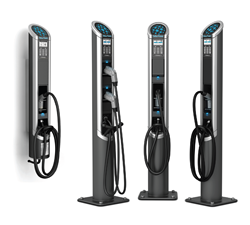Electric vehicles (EVs) are quickly gaining traction in Kenya, but for many drivers, the concept of charging an EV is still new. Understanding how, where, and when to charge your electric vehicle is crucial to getting the most out of your EV ownership experience. This blog will cover everything Kenyan drivers need to know about EV charging.
Types of EV Chargers
There are three main types of EV chargers: Level 1, Level 2, and DC Fast Chargers.
– Level 1 chargers use a standard household outlet and are the slowest, providing about 4-5 kilometers of range per hour of charging.
– Level 2 chargers require a dedicated 240V outlet and can provide up to 30 kilometers of range per hour, making them ideal for home use.
– DC Fast Chargers are the quickest, providing 80% of a vehicle’s charge in 20-30 minutes, but they are usually found at public charging stations.
Where to Charge
In Kenya, public charging stations are becoming more common, particularly in urban areas. Major malls, office complexes, and fuel stations are increasingly offering EV charging points. However, home charging remains the most convenient option for many drivers. Installing a Level 2 charger at home ensures your vehicle is fully charged overnight, ready for a full day of driving.
Charging Costs
The cost of charging an EV in Kenya is significantly lower than the cost of petrol. Electricity rates vary depending on the time of day, averaging about KES 30 per unit. In contrast, a liter of petrol is retailing at KES 188; meaning charging an EV is 84% cheaper than refueling a petrol vehicle.
By charging your vehicle overnight, you can maximize savings. Additionally, OpenCharge offers free charging for the first year when you finance an EV through us, further reducing your operational costs.
Charging Etiquette
With the number of EVs on the road increasing, it’s important to practice good charging etiquette. Always move your car once it’s fully charged to make the charger available for others. If you’re using a public charger, be mindful of how long you’re occupying the spot, especially at fast-charging stations.
Battery Life and Charging Tips
To extend the life of your EV’s battery, avoid charging it to 100% unless necessary. Keeping the battery level between 20% and 80% is ideal for longevity. Also, try to use Level 2 chargers for regular charging and reserve DC Fast Chargers for long trips or when you’re in a hurry.
